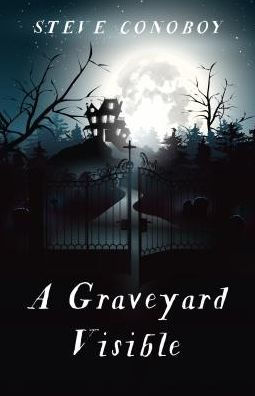 By STEVE CONOBOY (Lodestone Books; 2018)
By STEVE CONOBOY (Lodestone Books; 2018)
This, I feel, is the book the famed (and also dreary and excruciatingly self-important) A MONSTER CALLS should have been. As in that 2011 tome, this one is a young adult novel involving a boy dealing with the real life issue of the death of a loved one, as well as some decidedly more esoteric, supernatural occurrences. In A GRAVEYARD VISIBLE, though, author Steve Conoboy takes his narrative in some decidedly unexpected directions, incorporating zombies, a mind-reading magic eight ball and a graveyard whose mass is steadily increasing.
That latter occurrence is discovered by Caleb, a young boy living in a house adjacent to said graveyard (which, I should point out, is the term used throughout the book, in place of the more common “cemetery”). Caleb spends his days obsessively measuring the yard, and finds that it is in fact growing progressively larger despite the fact that it seems to occupy the same amount of physical space it always did. Caleb’s mother is among the corpses interred in the graveyard, hence his obsession with it. He lives with his distant father and visits his eccentric grandfather, who, it transpires, has his own connection with the graveyard.
Also residing in the area is Misha, a young girl in possession of the aforementioned magic eight ball. She has her own problems, foremost among them some profoundly eccentric relatives. Among other oddities, her elders are seeking to resurrect a long-dead woman, a gambit in which Caleb becomes unwittingly caught up. It would seem Caleb and Misha are destined to become allies in this bizarre drama, and indeed they do, but be advised that here, as in most every other respect, the narrative is stubbornly unpredictable.
The novel’s latter half may be a bit overly involved, juggling as it does a number of eccentric characters (many of them undead), each with his/her/its own complicated backstory, in addition to diary entries made years earlier by Caleb’s grandfather—a far cry from the elegant simplicity of the early chapters. But the whole thing is never less than eminently readable, with prose that’s poetic and stylized without ever seeming the slightest bit dense or self-conscious. The ending for its part is pitch-perfect, bringing this plot-heavy account back to its thematic starting point as a surreal rumination on death, grief and the tragic inevitability of both.
